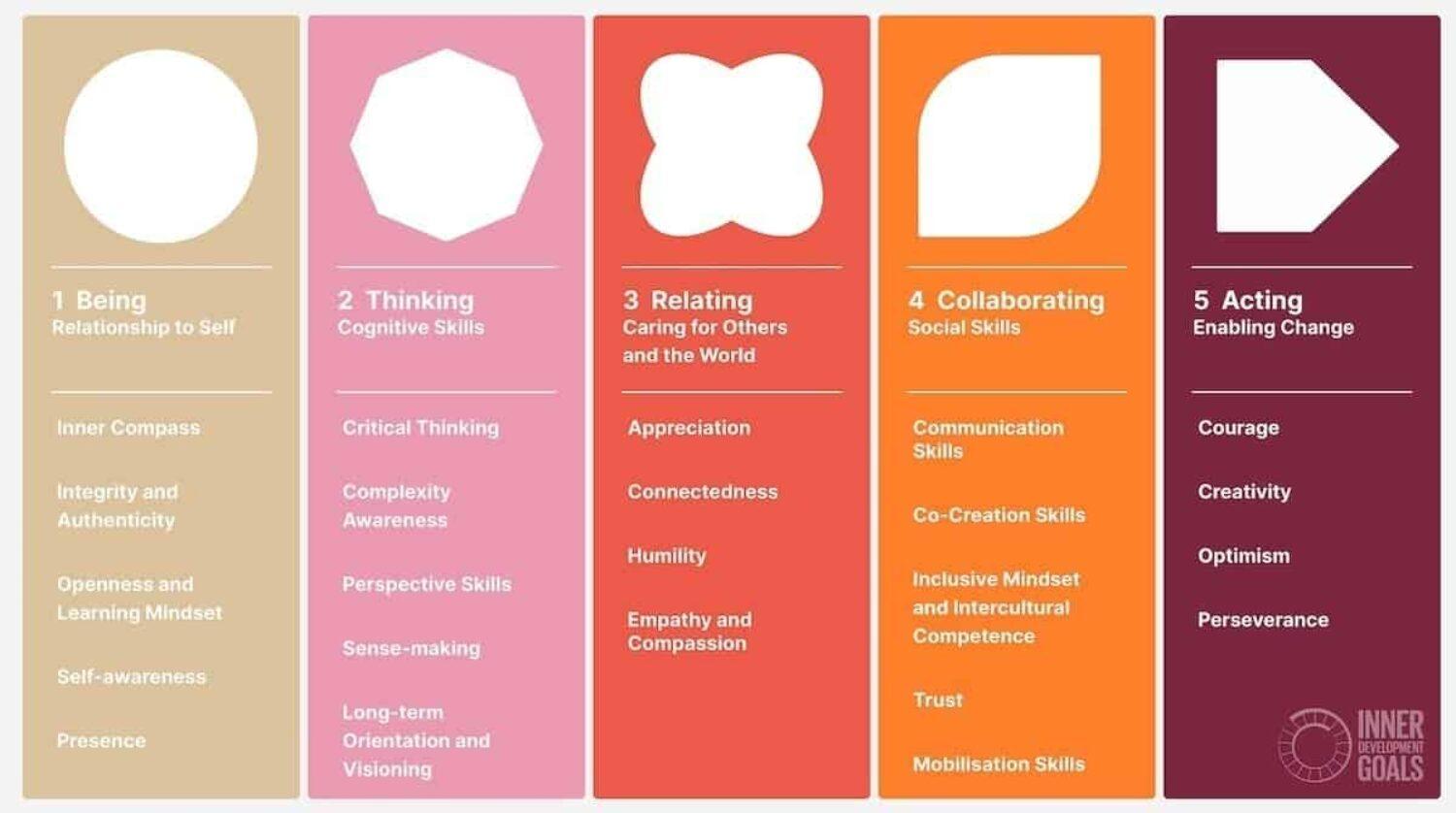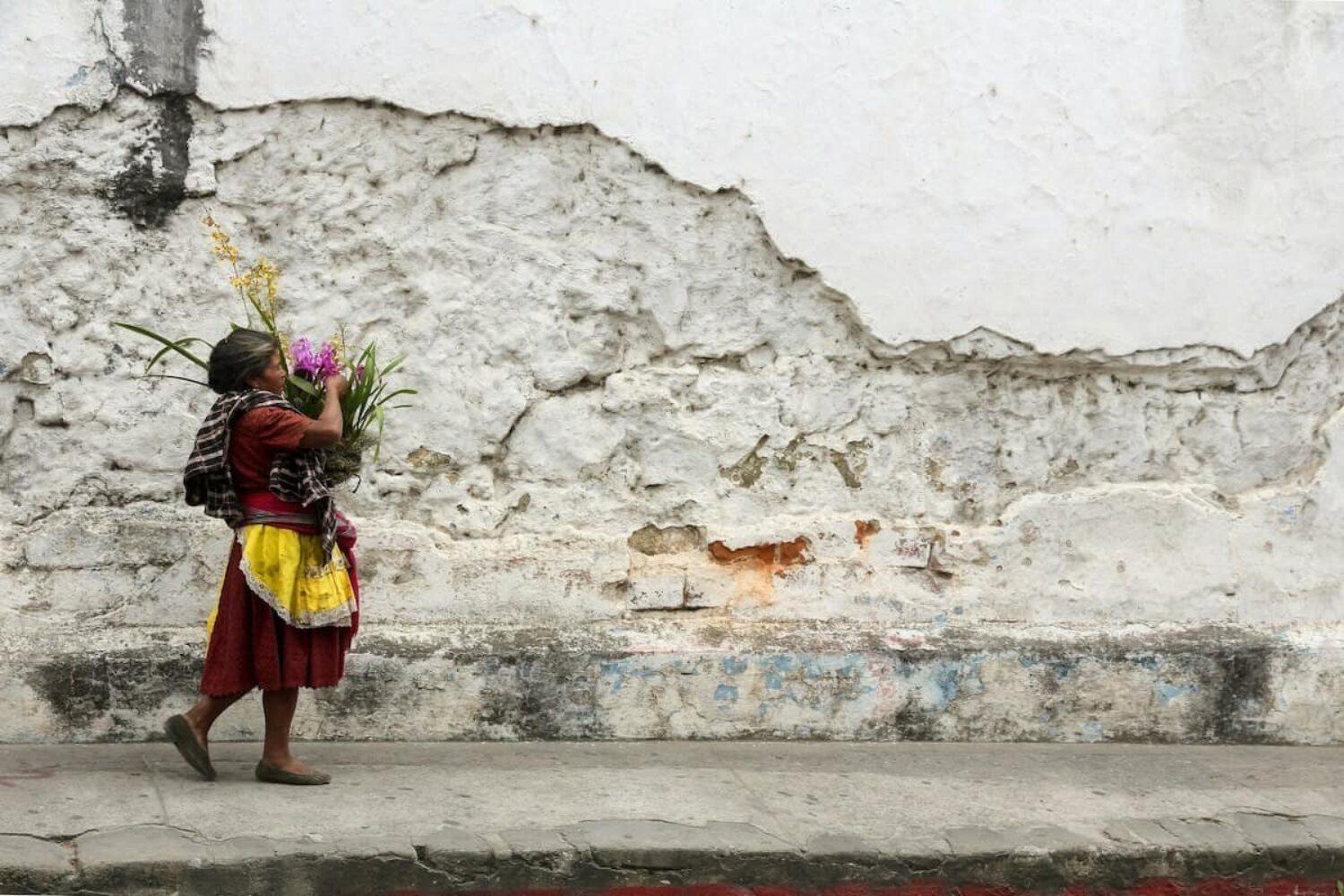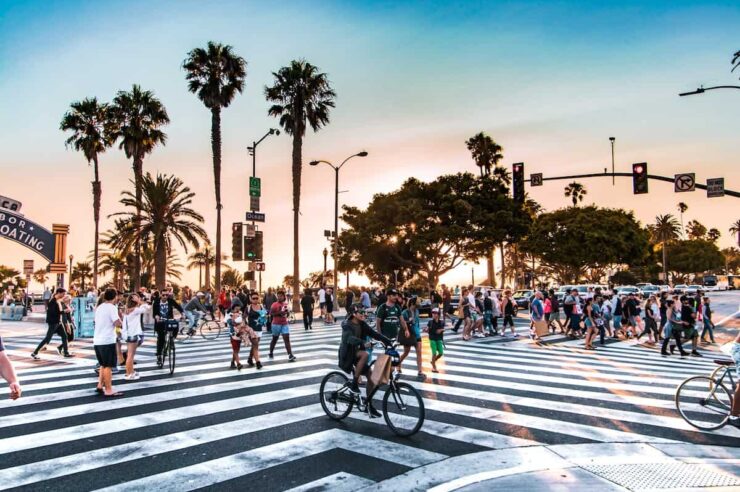The UN sustainable development goals are badly needed. But progress is slow. Do we lack an inner capacity to make the necessary changes? Shifts on a personal level could be the missing part of the puzzle to unlock huge progress, believe the team behind the Inner Development Goals
Six years. That’s the target. A mere 72 months to set the world to rights and deliver on the UN sustainable development goals (SDGs). It’s a long to-do list. Eliminate poverty, reach zero hunger, achieve gender equality, tackle the climate crisis. So, will we do it?
The United Nations is putting on a brave face. Its official message: “Now is not the time to panic or lose hope.” Invest in the right “science” and “evidence-based solutions”, the global umbrella organisation maintains, and we can still usher in a fairer, safer, greener world.
A group of concerned academics, educators and other big brains respectfully disagree. Not because they are cynics or technophobes. If smart innovations or breakthrough policies pop up, they are all for embracing them. Where the advocates of the Inner Development Goals differ is around where the focus of our collective energies should lie.
For decades, the world’s best minds have looked externally – to engineering, economics, medicine, conservation and so on – to create a more sustainable future for all. What they’ve neglected, or at least downplayed, is a dose of introspection. If only we could learn to be more self-aware then our prospects of success would improve exponentially.
So argues Daniel Hires, a former social entrepreneur and now the marketing mouthpiece for the movement, which counts 400 ‘hubs’ of loosely knit followers dotted around the world. As he puts it: “Pushing ahead with renewable energy or recycling your trash, all that stuff is great; but it’d be even more meaningful for us to transcend our current way of being and show more compassion.”
The idea to look inside ourselves for answers is as old as the hills. Yogis, philosophers and spiritual gurus of all colours have taught that the search for true happiness and fulfilment lies within us. Where the Inner Development Goals diverge is in their application of that thinking to the exterior world of human progress – and, more specifically, to the seemingly ill-fated SDGs.

Illustration: Elin Svensson for Positive News
What’s the logic? Partly it’s down to the impasse that our pursuit of ‘smart’ solutions has led to, says Andrew Serazin, former president of Templeton World Charity Foundation, a Bahamas-based grant-maker that works at the ‘frontiers of human flourishing’.
“Where we are today perhaps is we’ve hit a limit to purely technocratic external solutions to solve global problems,” he says. “We have come to a point where the outside perspective has to be complemented by an inside perspective.”
Another reason for a rebalance in focus is to get a clearer-eyed view of why the progress of global development is faltering. Why is it that 650 million people still live in abject poverty? What keeps many more than double that number from having secure access to food?
We need a spiritual and cultural transformation
Orthodox economists will give a conventional response. Low economic productivity, weak operating environments, state corruption, lack of capital investment, etc. Solve these and universal prosperity will flourish, they argue.
Advocates of the Inner Development Goals may well agree, but they’ll add an extra factor: us. To their mind, we (read: citizens of rich industrialised nations, for the most part) are also part of the problem. We prefer to hoard our wealth rather than share it, they point out. Our interests, furthermore, come above (and, if push comes to shove, in place of) those of others.
Many used to think that the world’s main environmental challenges were biodiversity loss, ecosystem collapse and the climate crisis. Gus Speth, former dean of the School of Forestry & Environmental Studies at Yale, is widely attributed to have identified a different trio: selfishness, greed and apathy. “And to deal with those,” he adds, “we need a spiritual and cultural transformation.”

It’s that transformation to which the Inner Development Goals are geared. The movement is built around five core ‘dimensions’. First, a different way of ‘being’ and ‘thinking’. Then, in turn, new modes of ‘relating’, ‘collaborating’, and ‘acting’. Listening is key. As Hires puts it, today we’re used to “mostly broadcasting and waiting to speak, rather than really listening to what the other person is saying”.
Each dimension comes with a subset of related skills and qualities. So, ‘collaborating’, for instance, encourages the development of communication skills (starting with the “ability to really listen to others”), as well as co-creation, an “inclusive mindset”, trust and mobilisation skills.
Hires is anxious to point out that the framework is descriptive rather than prescriptive. The idea is to highlight the need for closer attention on our inward development; not to map out a step-by-step guide on exactly how to achieve it.
“It is much more about looking at what is already happening out there and giving that a language,” he explains. “We haven’t sat in our garage and said: ‘You know, we have the masterplan.’”
A privileged passion project or genuinely useful?
In that sense, the term ‘goals’ is something of a misnomer. Yes, it works as a nod to the SDGs; but any notion of attaching measurable targets to the initiative would be a misreading of both its substance and its intent, says Hires.
That said, the approach is already being taken up by some companies, including Swedish retail giant Ikea, which uses it to design and evaluate its leadership training programme. But in a world in which so many lack basic necessities, doesn’t talk of inner refection and the like smack of Western privilege?
Without doubt, concedes Hires, who lives in Barcelona and claims German and American citizenship but who started life as an abandoned baby on the streets of Seoul. As urgent priorities go, nothing comes before putting food in the belly of a starving child or a roof over the heads of a homeless family. Not education, not peacebuilding, not climate mitigation – and not inner development.

A lot of theory underpinning the Inner Development Goals is familiar to indigenous communities. Image: Scott Umstattd
Yet pitting immediate humanitarian aid against a longer-term shift in how we approach global development is a false comparison, says Hires. The idea of adopting a greater inner focus is to enhance current practices, not replace them.
That is not to say that the Inner Development Goals are free of bias. When a delegation from Rwanda was first presented with the framework, they scratched their heads. “Where does it mention forgiveness?” they wanted to know.
To revise the initiative so it is as inclusive as possible, Hires and his colleagues are currently running a one-question global survey. They hope to gather as many as 100,000 responses by asking: name up to 10 qualities, abilities or skills we need to build a sustainable future for people and planet?
“A lot of these things are nothing new to people from indigenous communities,” admits Hires. “We’re just trying to make them more understandable and accessible to people sitting in the industrialised world.”
Getting real: the inner development goals in practice
By Lucy Purdy
“We see the IDG framework almost as a part of the engine under the hood of the car,” says Selina Waddington Millstam, ex-global head of talent at Ericsson. Along with Ikea and Google, the company is among around 100 organisations that have already started working in some way with the goals.
Many, like Google, have started small, incorporating one or two goals into a single department or team, while others have attempted a more sweeping adoption, from the Swedish conglomerate Stena to footwear brand Icebug.
The IDGs’ first white paper, published in September, captures some of the triumphs and challenges so far. Much makes for refreshing reading. Where else would you encounter Michiel Bakker, Google’s vice-president of global workplace programs, pondering how being “vulnerable” with colleagues shifts a room’s dynamic? “It creates something very powerful.”

Ikea and Google are among the firms embracing the Inner Development Goals. Image: Zheka Kapusta
Bakker can likely do without any fresh tasks in his in-tray, so why did Google – where revenue approaches $300bn (£239bn), with 170,000 employees in 55+ countries – want to get involved? “In these times of change, it is very, very clear to me that what has made us successful so far, is not going to make us successful going forward,” he writes. “The world is changing at a faster pace.”
Bakker’s own department held a three-day workshop, which he called a “very emotional and personal experience”, deciding to work with the three or four competencies that are “business critical”.
From the top team at Ikea, which turned 80 last year, Tina Molund notes their motivation to take part: “Time strengthens, but it can also breed complacency, so the IDGs have been a great tool to challenge thinking.”
What has made us successful so far, is not going to make us successful going forward
Staff started off by self-assessing their actions and behaviours in relation to the five transformational skills. When conversations around the concept become too intellectual, Molund’s colleague Jenny Hjalmar Åkerblad proposes the Swedish septuagenarian test as a fix:“Inner development is universal, but how can the IDGs be made relatable for my 76-year-old mother?”
Another challenge has been prioritising the work when bottom lines shout loudest. “It’s hard for many senior leaders to give “significant time and attention” to questions like cultural transformation and inner development,” admits Ericsson’s Waddington Millstam. She mentions too the corporate “dance” of needing to prove progress. “Yes, the data is there, but this work also requires a belief in its intrinsic value. And some leaders hold that belief more than others.”
But elsewhere, she offers a signal that introspection is creeping in to the boardroom at the telecoms giant, for one: “We are the ones enabling our children to scroll on TikTok. Our connectivity decisions are influencing how terrorists are communicating. This makes it all the more important to bring the power of inner development to our 7,000 leaders around the world, even if it is a journey that will take time.”
Main illustration: Elin Svensson for Positive News
This article was amended on 8 February 2024 to reflect Andrew Serazin’s updated role, to correct the location of the Templeton World Charity Foundation and to clarify the attribution of a quote, which we now realise is by Gus Speth
Support solutions in 2024
Positive News is helping more people than ever to get a balanced and uplifting view of the world. While doom and gloom dominates other news outlets, our solutions journalism exists to support your wellbeing and empower you to make a difference towards a better future.
But our reporting has a cost and, as an independent, not-for-profit media organisation, we rely on the financial backing of our readers. If you value what we do and can afford to, please get behind our team with a regular or one-off contribution.
Give once from just £1, or join 1,400+ others who contribute an average of £3 or more per month. You’ll be directly funding the production and sharing of our stories – helping our solutions journalism to benefit many more people.
Join our community today, and together, we’ll change the news for good.




